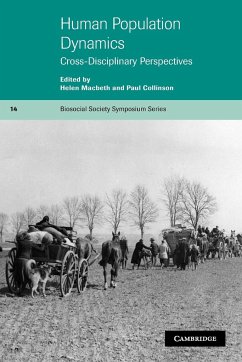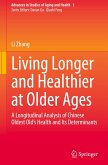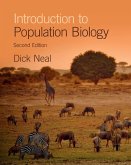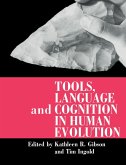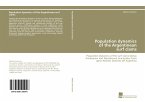In human populations, biological, social, spatial, ecological and economic aspects of existence are inextricably linked, demanding a holistic approach to their study. Many undergraduate and postgraduate courses now emphasise the value of studying human populations using theoretical frameworks and methodologies from different traditional disciplines. Human Population Dynamics introduces such frameworks and methodologies whilst demonstrating how changes in human population structure can be addressed from several different academic perspectives. As such, the book contains contributions from world-renowned researchers in demography, social and biological anthropology, genetics, biology, sociology, ecology, history and human geography. In particular, the contributors emphasise the lability of many population structures and boundaries, as viewed from their area of expertise. This text is aimed at undergraduate students, graduates and academic researchers from any academic discipline which considers human populations.
Table of contents:
Foreword Geoffrey Harrison; Preface; 1. Introduction Helen Macbeth and Paul Collinson; 2. Demographic perspectives on human population dynamics Andrew Hinde; 3. The growing concentration of world population from 1950 to 2050 John I. Clarke; 4. Population, community and society in peasant societies Robert Layton; 5. From genetic variation to population dynamics: insights into the biological understanding of humans Jaume Betranpetit and Francesc Calafell; 6. Social institutions and demographic regimes in non-industrial societies: a comparative approach Richard Smith; 7. The dynamics of child survival Emily K. Rousham and Louise T. Humphrey; 8. Genetic structure of south Indian caste populations: a confluence of biology and culture L. B. Jorde, M. J. Bamshad, W. S. Watkins, C. E. Ricker, M. E. Dixon, B. B. Rao, B. V. R. Prasad and J. M. Naidu; 9. Fertility, mortality and migration transitions in association with socioeconomic modernisation among highland minority populations in South East Asia Peter Kunstadter; 10. Ecology, homeostasis and survival in human population dynamics Robert Attenborough; Glossary.
Human Population Dynamics is an introductory text demonstrating how changes in human population structure can be addressed from multi-disciplinary perspectives. As such, it contains contributions from specialists in demography, social and biological anthropology, genetics, biology, sociology, ecology and human geography. This text is aimed at academic researchers, graduates and undergraduates.
An introductory text on human population dynamics from a multi-disciplinary perspective.
Hinweis: Dieser Artikel kann nur an eine deutsche Lieferadresse ausgeliefert werden.
Table of contents:
Foreword Geoffrey Harrison; Preface; 1. Introduction Helen Macbeth and Paul Collinson; 2. Demographic perspectives on human population dynamics Andrew Hinde; 3. The growing concentration of world population from 1950 to 2050 John I. Clarke; 4. Population, community and society in peasant societies Robert Layton; 5. From genetic variation to population dynamics: insights into the biological understanding of humans Jaume Betranpetit and Francesc Calafell; 6. Social institutions and demographic regimes in non-industrial societies: a comparative approach Richard Smith; 7. The dynamics of child survival Emily K. Rousham and Louise T. Humphrey; 8. Genetic structure of south Indian caste populations: a confluence of biology and culture L. B. Jorde, M. J. Bamshad, W. S. Watkins, C. E. Ricker, M. E. Dixon, B. B. Rao, B. V. R. Prasad and J. M. Naidu; 9. Fertility, mortality and migration transitions in association with socioeconomic modernisation among highland minority populations in South East Asia Peter Kunstadter; 10. Ecology, homeostasis and survival in human population dynamics Robert Attenborough; Glossary.
Human Population Dynamics is an introductory text demonstrating how changes in human population structure can be addressed from multi-disciplinary perspectives. As such, it contains contributions from specialists in demography, social and biological anthropology, genetics, biology, sociology, ecology and human geography. This text is aimed at academic researchers, graduates and undergraduates.
An introductory text on human population dynamics from a multi-disciplinary perspective.
Hinweis: Dieser Artikel kann nur an eine deutsche Lieferadresse ausgeliefert werden.

